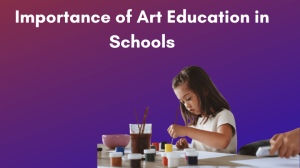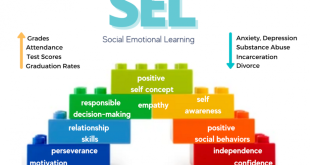Arts education plays a crucial role in the holistic development of students, providing them with essential skills that extend beyond the realm of creativity. As schools increasingly emphasize standardized testing and core academic subjects, the significance of arts education often gets overshadowed. However, a robust arts curriculum is vital for fostering creativity, critical thinking, emotional intelligence, and cultural awareness among students. This article explores the multifaceted importance of arts education in schools and its impact on student development.
1. Fostering Creativity
a. Encouraging Innovative Thinking
Arts education encourages students to think creatively and approach problems from different angles. Through activities such as painting, music, theater, and dance, students learn to express their ideas and emotions in unique ways. This creative thinking is not only essential for artists but also for individuals in various fields, including science, technology, engineering, and mathematics (STEM). Innovative solutions often arise from the ability to think outside the box, a skill nurtured through arts education.
b. Enhancing Problem-Solving Skills
Engaging in the arts requires students to make decisions, experiment with different approaches, and learn from their mistakes. This process enhances their problem-solving skills, teaching them to adapt and find solutions in various situations. Whether composing a piece of music or choreographing a dance, students learn to analyze their work critically, leading to improved cognitive flexibility.
2. Developing Emotional Intelligence
a. Self-Expression and Personal Growth
Arts education provides a platform for students to express their thoughts and feelings. This self-expression is critical for emotional development, allowing students to explore their identities and navigate their emotions. Engaging in artistic activities fosters personal growth and self-awareness, helping students understand their feelings and develop a sense of belonging.
b. Empathy and Understanding
Participating in the arts also cultivates empathy. Students learn to appreciate different perspectives through storytelling, performance, and visual arts. By engaging with diverse cultural narratives and artistic expressions, students develop a broader understanding of the world around them. This empathy is essential for building meaningful relationships and fostering a compassionate society.
3. Enhancing Academic Performance
a. Improved Academic Outcomes
Research has consistently shown a positive correlation between arts education and academic achievement. Students involved in arts programs often perform better in core subjects such as math, reading, and writing. The skills acquired through arts education—such as critical thinking, creativity, and discipline—translate into improved performance in traditional academic areas.
b. Increased Engagement and Motivation
Arts education can significantly boost student engagement and motivation. When students connect with the material through creative outlets, they are more likely to participate actively in their education. This increased engagement often leads to higher attendance rates and a more positive attitude toward learning.
4. Building Cultural Awareness and Appreciation
a. Understanding Diversity
Arts education exposes students to various cultures, traditions, and artistic expressions. This exposure fosters an understanding of diversity and promotes cultural appreciation. Students learn to value different perspectives and recognize the contributions of various communities to the world of art and culture.
b. Preserving Cultural Heritage
Incorporating arts education into school curricula helps preserve cultural heritage. Through music, dance, visual arts, and theater, students can explore their cultural backgrounds and those of others. This exploration not only enriches their knowledge but also instills pride in their heritage and identity.
5. Strengthening Community Connections
a. Collaboration and Teamwork
Arts education often involves collaboration, whether in group projects, theater productions, or ensemble performances. These collaborative experiences teach students the importance of teamwork and communication. They learn to work together towards a common goal, fostering a sense of community and shared responsibility.
b. Community Engagement
Arts programs frequently involve community partnerships, allowing students to engage with local artists, organizations, and cultural institutions. This engagement helps students recognize the value of their contributions to the community and encourages them to participate in community service and civic activities.
6. Preparing for Future Careers
a. Skills for the 21st Century
In today’s rapidly changing job market, creativity and innovation are increasingly valued. Arts education equips students with essential skills that are highly sought after by employers. Skills such as adaptability, collaboration, and critical thinking are not only relevant in artistic fields but also in business, technology, and other industries.
b. Pathways to Diverse Careers
Arts education opens diverse career pathways for students. While some may pursue careers as artists, musicians, or actors, others may find opportunities in fields such as graphic design, marketing, education, and arts administration. By nurturing creativity and artistic skills, schools provide students with the tools to explore various career options.
 Conclusion
Conclusion
The importance of arts education in schools cannot be overstated. It fosters creativity, enhances emotional intelligence, improves academic performance, builds cultural awareness, strengthens community connections, and prepares students for future careers. As schools face increasing pressure to prioritize standardized testing and core academic subjects, it is crucial to advocate for the inclusion of arts education in the curriculum.
Investing in arts education is an investment in the future. It cultivates well-rounded individuals who are not only academically successful but also emotionally intelligent, culturally aware, and ready to contribute positively to society. By embracing the arts, schools can create an enriching educational experience that nurtures the whole child, preparing them to thrive in an increasingly complex and dynamic world. Ultimately, arts education is not just an enrichment; it is a fundamental component of a comprehensive education that benefits all students.


